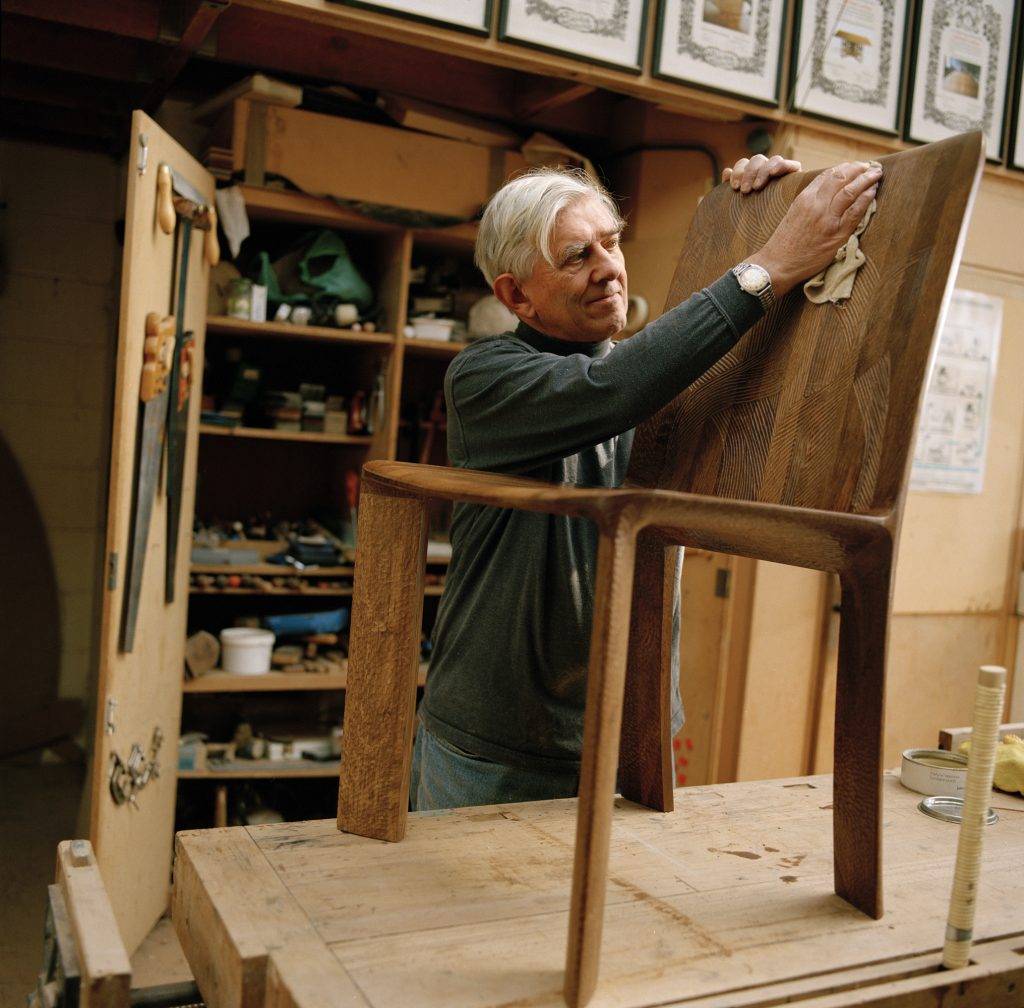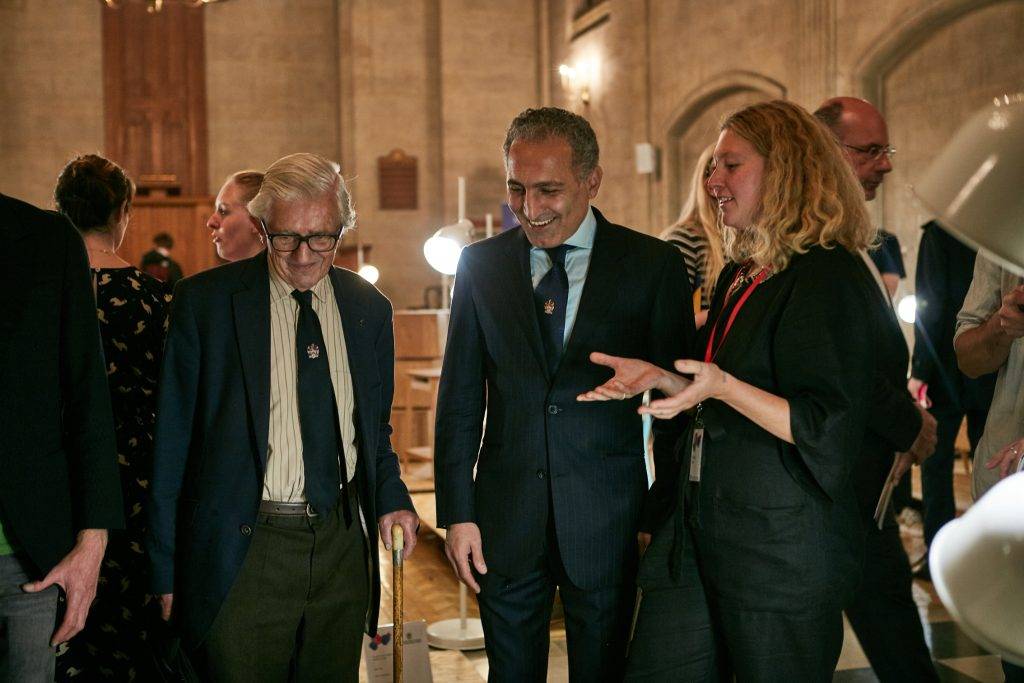News
Martin Cunningham Grierson FCSD, FRSA, FSDC 1932-2023
Having shown promise in art and woodwork at school, Martin graduated with distinction in furniture and interior design from the Central School of Arts & Crafts (now Central St. Martins) in London in 1953. He then spent several years working with leading architects and designers and won a number of design competitions, including the Dunlopillo Design Award.
In 1960 he opened his own design studio, working on many large-scale corporate and public projects. His major commissions included public seating for the Sainsbury Wing of the National Gallery and furniture for Croydon Town Hall, the Tate Gallery at St. Ives, several Cambridge colleges and the Bank of England, including the Governor’s desk.
When Martin set up his own workshop with a small team of craftsmen in 1975, it was out of a desire to see his work made to the best possible quality. He sought to use traditional forms of construction but on furniture that expressed contemporary style. In this his designs were extensive and varied. He enjoyed the wide-ranging challenge of different commissions, both corporate and private, and he increasingly became a champion of the designer-craftsman sector.


He taught at Kingston, Birmingham and Leicester polytechnics and numerous craftsmen whom he trained with care and patience over the years in his own workshop are grateful for his inspiration. He was always proud of that.
Martin was a Fellow of the Royal Society of Arts, the Society of Designer Craftsmen and the Chartered Society of Designers. He was a member of the Design Council’s Awards Panel, the Crafts Council Index Selection Committee and the British Standards Committee for Kitchen and Office Furniture.
He joined the Worshipful Company of Furniture Makers in 1992, served on its Court and won the Company’s Jubilee Design Competition for public seating at the Wallace Collection in 2001. In 2015 he gained the distinction of a Lifetime Achievement Award for his contribution to the furniture industry.
He became a member of the Art Workers’ Guild in 2005 and played an active role there also, including making a table and chairs for the Gradidge Room, experimenting with an unusual milk finish.